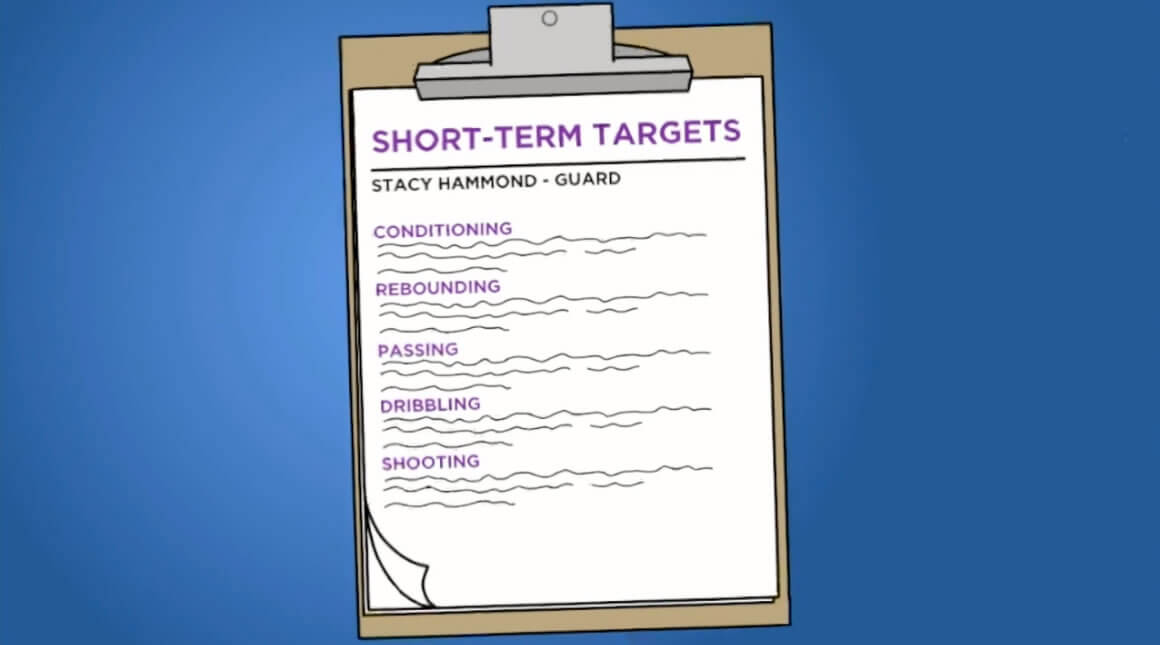Short-Term Targets and Long-Term Goals

Hi, I’m Dr. Marianne Engle. I am a sports psychologist with years of experience treating athletes at every level ranging from youth sports to professionals. You can just call me Dr. Marianne. Hi, I’m Garland Allen. I have spent more than 20 years as a high school coach and athletic director during my 35 years as an educator in public education. You can just call me coach.
Kids play sports to learn skills with the hope of improving every day. They want to be part of a team that sticks together and helps each other grow while having fun. Never lose site of the fact that the appropriate and necessary role of a coach extends well beyond preparing athletes for competition. Long after their physical skills have waned, and their competitive careers have ended, the values they learn under your watch, will most likely remain with them for a lifetime.
How they treat teammates and others will be greatly influenced by how you treat them and culture you help create in your program.
Always remember, you coach a sport but you teach kids, and great coaches are almost always great teachers. Coaches naturally have skill development targets and goals in mind for their teams and players.
Athletes, like all of us, have different learning styles. To be most effective, you should approach each target and goal using multiple teaching techniques that address different learning styles. Whether experienced or inexperienced, players learn best when you both show and explain the things you want them to learn. This will help targets and goals come alive, and seem more achievable.
Setting short-term targets for your team and for each player creates structure and momentum for achieving long-term goals.
Before each practice, ask yourself, how you will plan to make the session as efficient and focused as possible. Setting short-term individual targets focuses players on challenging themselves. By competing with themselves rather than their teammates, players are less likely to do things that undermine the success of their team and that’s a good thing.
Each player has a unique learning curve, and will benefit from different goal planning. Don’t treat all of them the same all of the time.
Get each athlete to think about what they want to work on. Frequent one on one conversations with each player increases motivation and improves planning. Help steer their targets based on their strengths and weaknesses. Players love a little individual attention from their coach. Know your players; recognize their physical and emotional maturity.
This means taking a general goal, like “I want to be faster” and turning it into a goal that is specific, measurable, attainable, realistic, timed.
For example: I want to run the mile x seconds faster in the next 3 months. Or a short-term target, I will practice my free throw shot routine x number of times each day to improve my percentage. Or set a more technical target around a specific action that you want your player to master. Every sport and position will require specific targets. team goals are for all the players.
Long-term goals also follow the SMART model. They should also be specific – measurable- attainable- realistic and timed.
1. What do you want your team to achieve by mid season and what do want them to achieve by the end of the season, then of course post season if you make it there.
Once you’ve decided on that, consider dividing each part of the season into blocks. Set targets for each block. This makes each set of targets seem more attainable. Achieving the targets in each block builds the foundation for the next block until your season’s long-term goals are within reach.
Be specific with each player and each section of your team. Get buy-in by demonstrating the skill, talking about the skill, and having the more experienced players help the younger players so that everyone feels responsible for team excellence.
2. Then have a time when you evaluate their learning.
Let each player know that you notice their progress and help them aim for more. If they are having difficulty, diagnose it. Provide more instruction and targets and fix the glitch. This attention to detail builds loyalty, confidence, and commitment. This will allow you to increase the scope and challenge of their targets. Your athletes are also learning what you believe is important. Targets should be short-term and doable. As your athletes achieve, they will begin to learn faster, and this will allow you to increase the scope and challenge of their targets.
Remember: sports are not just building blocks for strength and physical fitness. They build character and life skills.
With targets and goals, you will help them cultivate their attitudes, feel respect for each other, benefit from the season emotionally, and best of all, develop the mindset of a fine competitor. With great effort comes great rewards. Make the ride worth it. Most importantly, the journey through childhood and adolescence is a one-way trip and it has an expiration date. There are no do-overs. Kids only have the opportunity to go through it once.
Critically important lessons best learned during this time must become part of what you do as a coach.